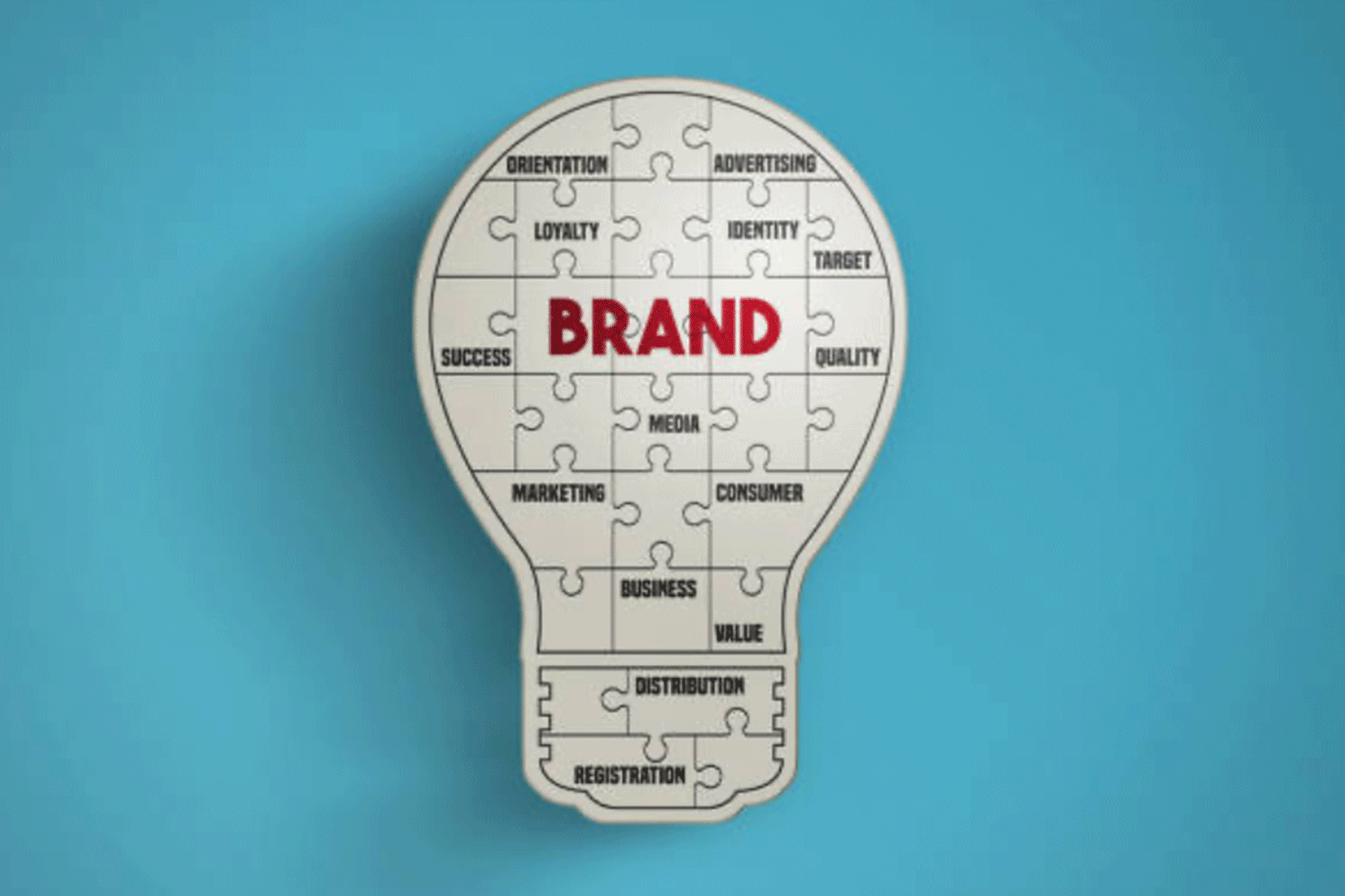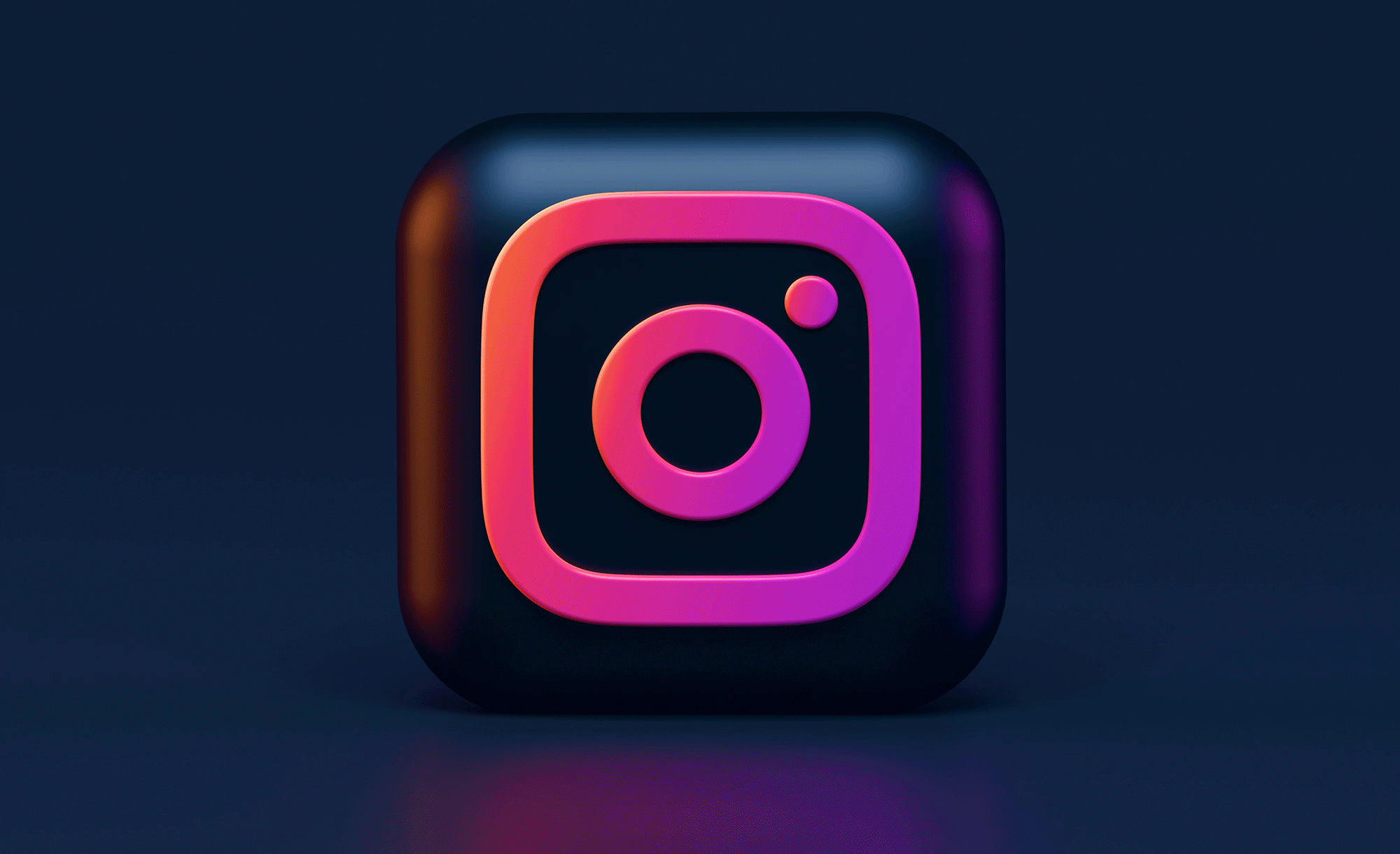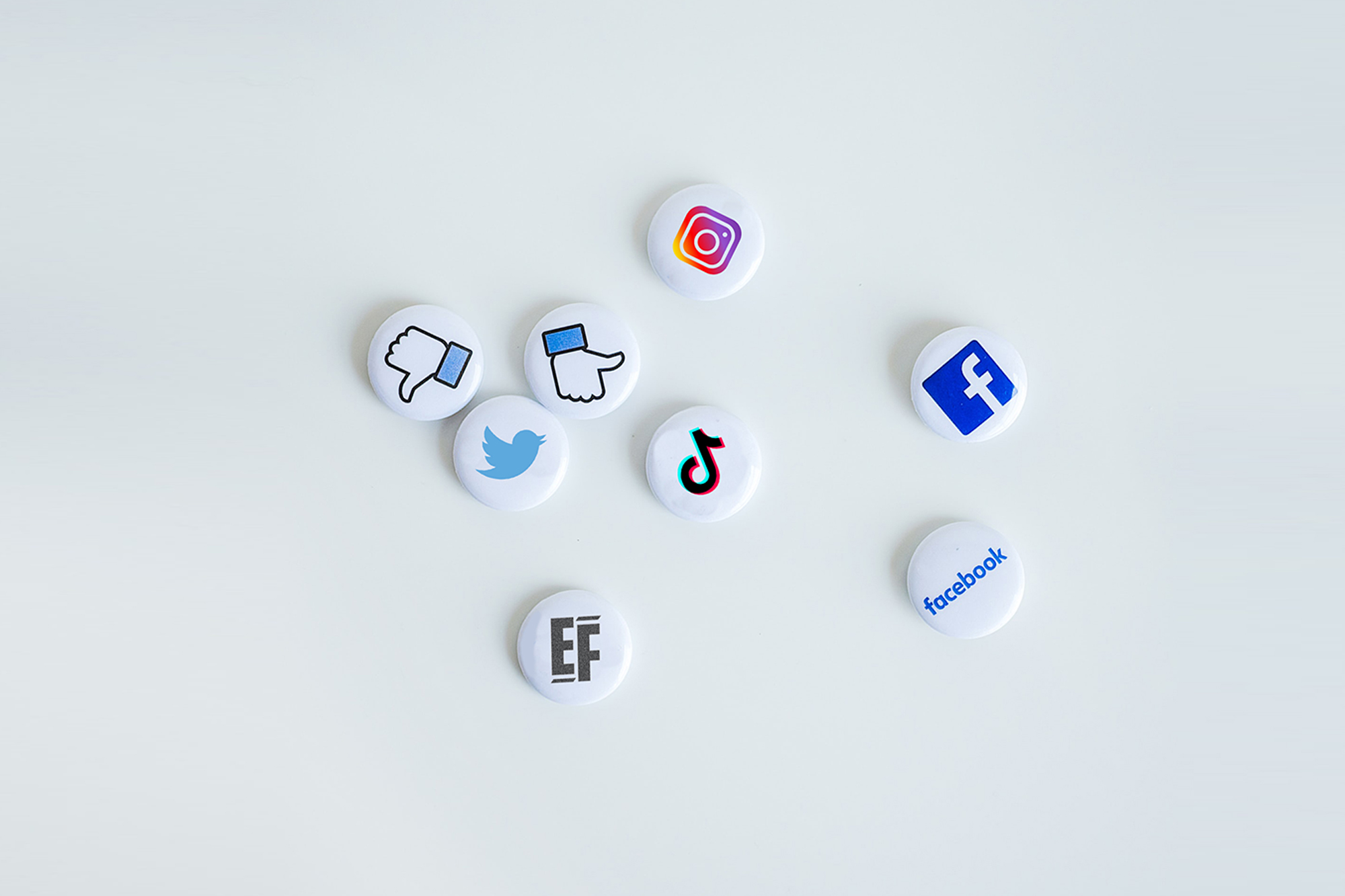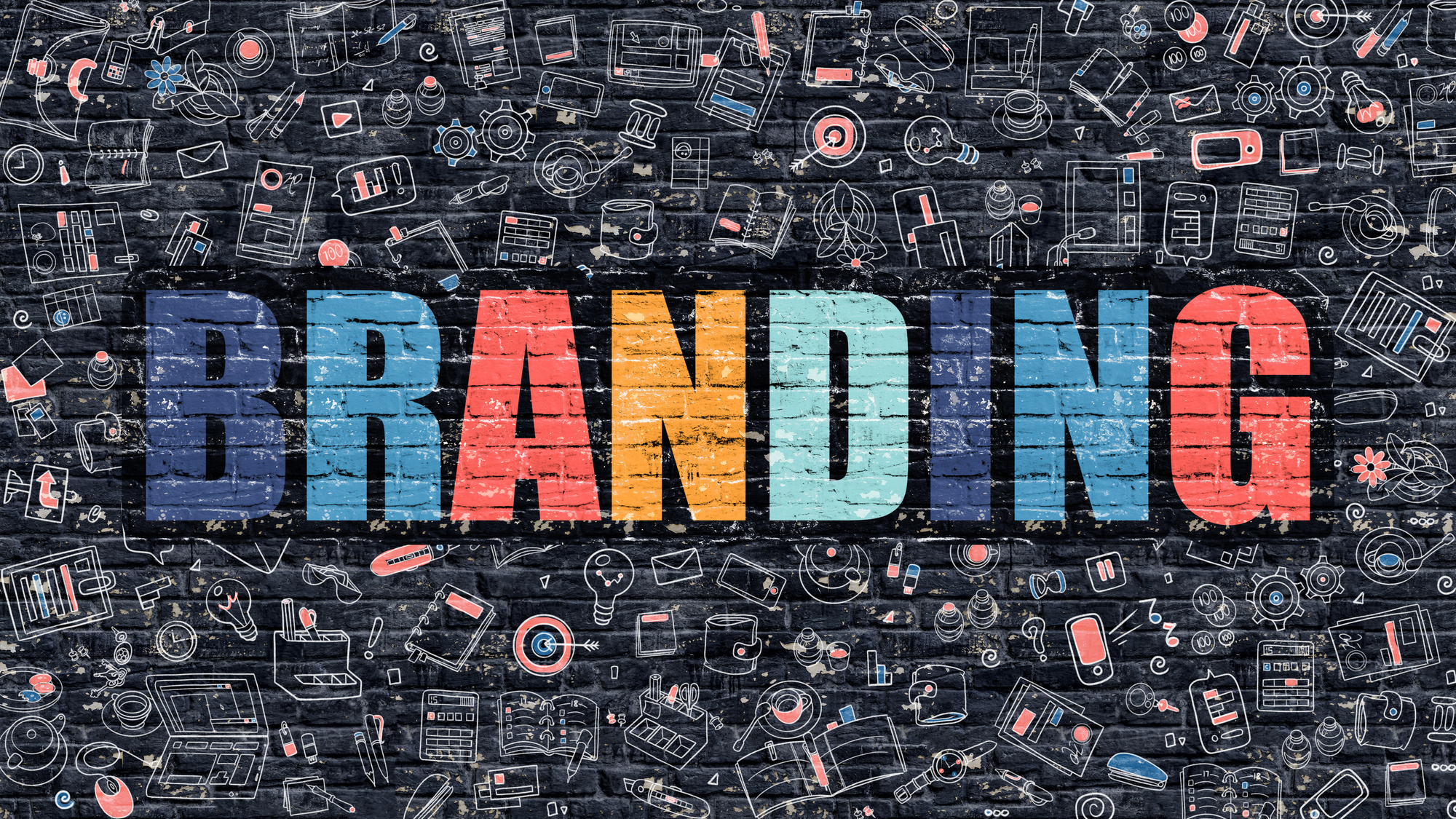How to Create a Winning Brand Strategy for Your Business
I am a huge proponent of brand strategy. Shocking I know. It's a no-brainer yet many clients bypass it. Well, according to research, it takes about 5 to 7 impressions to start creating brand awareness. Every business needs a strong brand that people can easily recognize and relate to. When consumers recognize your brand immediately, they pay attention to ads, recommend your company to others, and become repeat customers if they like your products or services.
Now, with only seven seconds to make the first impression, you need to bring your A-game if you're going to create a winning brand strategy. Here are ways to create a winning brand strategy.
Define Your Brand's Purpose
Your brand's purpose is what it stands for and what it hopes to achieve. It should be something more than making money. Nike, for example, doesn't just make shoes and clothes — they inspire people to be their best selves. Harley Davidson isn't just about motorcycles, they stand for freedom and the open road. Knowing your brand's purpose makes it much easier to create marketing messages that resonate with your target audience. You can also use it as a guideline for your business decisions.
Create a Strong Brand Identity
Your brand identity is what makes your brand unique. It's what people remember about you, even when they can't remember your name or product. Apple is an excellent example of a brand with a strong identity. Their logo, colors, and marketing messages are instantly recognizable to consumers worldwide.And their work, well, it's spectacular, to say the least.
And like them, your brand identity should be consistent across all channels, from your website to your social media profiles to your print materials. Use the same fonts, colors, and logos throughout so that people know they're dealing with your brand.
Create a Strong Brand Personality
Your brand personality is what your brand sounds and feels like. It should be unique, just like your brand identity, and should be reflected in your marketing campaign. For example, Apple's brand personality is sleek, modern, and minimalistic, while Harley Davidson's brand personality is rebellious and edgy. Think about the words you would use to describe your brand and use them to create a voice for your brand.
Develop a Marketing Strategy
Your marketing strategy is how you plan to reach and engage your target audience. It should include tactics like online advertising, PR, and content marketing. You also need a brand strategy that fits within your larger marketing strategy. It's essential to understand how you're going to reach your target audience every time, not just when it comes time for big campaigns. You can use tools like Google AdWords Keyword Planner to determine which ad networks are the best match for your brand.
Use Social Media Strategically
Social media is an integral part of any good brand strategy for many businesses. Customers want brands they can engage with in meaningful ways. With the right brand management in place, social media becomes a powerful tool to engage your customers and build brand awareness at the same time. There are plenty of brand management tools out there, so it's just a matter of finding one that fits your brand.
Be Consistent With Brand Messaging Across All Channels
Your brand identity is how you present your brand to the world. Whether you do it through your products, a marketing campaign, or social media. It should be consistently presented across platforms so people can identify it immediately and relate to it easily. If people see different messages on Twitter than they do on Facebook or Instagram, they might not know which brand they represent. Now, most processes are not that easy, and you may need professional help, so hire a brand strategy agency.
Build Brand Loyalty Through Brand Experience
The brand experience is what your customers feel when interacting with your brand. That's whether trying out a product or interacting with customer service online. Brands like Disney and Starbucks have built their success on providing great brand experiences that create loyal customers and raving fans. Your brand experience should be consistent across all channels, from your website to social media profiles to customer service interactions. Every touchpoint matters. Make sure everything aligns with who you are as a brand and what you stand for at every point in the journey.
Create Brand Associations
Brand associations are the images and feelings your brand evokes in consumers' minds. Associations can be positive or negative, but they have to strike a chord with your target audience if you want brand recognition. For example, Old Spice is associated with virility. Dove is associated with nurturing women's self-esteem. Both brands are successful because their brand associations are clear and resonate with their audiences.
Get Brand Reviews From Experts and Existing Customers
Getting brand reviews from experts in your industry plays a significant role in brand recognition. You see, people respect third-party endorsements. They'll be more likely to trust the authenticity of your brand if it's been recommended by an expert they respect. If you don't have any brand reviews yet, ask some of your satisfied customers for recommendations. Use these reviews in future marketing and sales materials and on your promotional channels, website, social media platforms, print materials, etc.
Analyze Your Brand Competition
It's important to know your direct brand competitors because these are the people you're competing with for brand recognition and sales. However, don't stop there. You should also study how other brands in your industry get their message across to determine what works well and what doesn't work at all. If possible, try to get a copy of an annual brand report produced by an industry association or research company. You'll see which brand strategies are working best in your business niche. Compare this data to your brand strategy to see if there are any gaps between where your brand is now and where it needs to be for success.
Measure Brand Success Using Key Performance Indicators
To know if your brand strategy is working, you must track progress and measure it against your goals. You can achieve this by setting up key performance indicators (KPIs) and tracking them over time. KPIs can vary depending on your brand and business. However, common ones might include brand awareness, website traffic, leads generated, or social media engagement. By tracking these metrics regularly, you can see how well your brand strategy is working and make necessary adjustments along the way.
Creating the Best Brand Strategy: Everything You Need
Branding is one of the most important aspects of any business. A strong brand strategy can help you to connect with your target audience. It'll help you stand out from the competition, and achieve success in today's crowded marketplace. With the tips provided in this guide, you should be able to create a winning strategy. That said, if you need help getting a good brand strategy together, please give us a call, and we'll work together.
What Are the Common Types of Digital Marketing?
If you're like us and you run a small business, you know the importance of expanding your customer base and reaching new eyes. Marketing is everything when it comes to business growth, but not enough business owners understand how to make it work for them. While traditional marketing is still useful and you should never toss away your business cards, various types of digital marketing are the way forward.
But what is digital marketing anyway and why the heck is it so important?
Well, digital marketing is any type of marketing that uses digital means to reach customers. Most of the time this marketing comes in the form of internet-based communication and content. We're here to talk about what types of digital marketing are used for marketing a business. So pour yourself a cup of Joe and pull up a chair.
SEM (Search Engine Marketing)
SEM is the first thing that most people think of when they think about digital marketing. SEM is search engine marketing and it's somewhat of an umbrella term, but in this context, we're using it to mean paid marketing, which is also often referred to as "PPC" or "pay per click" marketing. Lots of small businesses start out with SEM while they grow the rest of their digital marketing strategy. This means that you should have room in your marketing budget to accommodate routine SEM payments.
Why is it so important? Well when you use SEM, your business's website will appear at the top of search engines by default, but potential customers will know that you've paid for this spot due to the "ad" label. That said, this is still a great way to gain more traffic.
SEO (Search Engine Optimization)
SEO is the king of digital marketing and all business owners should include it in their digital marketing strategy. When you use search engine optimization, you're setting your website up to move up the search rankings. Because many people never venture beyond the first page of Google searches, this is crucial. SEO has many benefits that SEM just can't match. While both are useful, SEO is popular for a reason. When you invest in good SEO, you're setting your website up for a future of success instead of just success at the moment. That SEM will be the stepping stone for your business, but SEO will keep your strategy afloat.
SEO has to do with several things. You need to have an updated and accurate Google My Business page, great keyword use on your site, and valuable information. Many people make the mistake of using bad tactics like "keyword stuffing" (or overusing keywords for SEO purposes instead of useful purposes). This practice can hurt your SEO. This is one of the reasons that it pays off to have a professional. SEO ends up paying for itself over time and you don't have to pay every time you want an ad at the top of the search engine.
Local SEO
Speaking of SEO, local SEO is also important if you're a brick-and-mortar business that's trying to drum up local customers and support. You want to make sure that you're targeting the right people, right? A lot of people, 76% in fact, will visit a business within a day after searching for it on their smartphones. For you to turn up on that smartphone search, you need to utilize local SEO. Local SEO is broken down into several categories and there are several ways to make it work for you. It requires you to use local keywords and have an accurate position on Google Maps. This allows customers to recognize that your business operates out of their town or city. You can also build your local SEO by acquiring backlinks from other local businesses both in and out of your niche. This tends to be a tradeoff between businesses, so this is a great time to talk to local business owners about negotiating an arrangement.
Content Marketing
Content marketing and SEO (local and otherwise) go hand in hand. But what is content marketing? Content marketing is when you utilize blog posts and other valuable content to attract customers and build your SEO. While blog posts were once for people writing personal accounts on Livejournal or filling on food blogs, many businesses now use them as part of their digital marketing strategies. When you use content marketing, you fill your website with valuable keywords. This means that people browsing the web who are looking for a specific service, or even an answer to a question, will come across your page.
When you use content marketing, you'll come off as an expert in your niche, which will help you build customer trust.
Social Media Marketing
Social media marketing has little to do with your website and everything to do with keeping up with social media trends. Everyone knows about social media marketing and how it can contribute to growing a business, but are you taking advantage of it? When you hire a professional for your digital marketing strategy, you'll be able to find and target your ideal audience with social media marketing. For example, if your target audience is made up of millennial women, you may end up focusing on utilizing Instagram because that's where that demographic "lives" on the internet.
While social media marketing contains traditional ads and hashtagged content to attract new people, you can also utilize influencer marketing. Younger audiences tend to prefer this marketing style as they don't respond as well to standard digital ads.
Try These Types of Digital Marketing to Grow Your Business
These are just some of the various types of digital marketing that you can use to help your business grow and thrive. Whether you're using SEM, SEO, or social media marketing (or a combination of the three), you'll discover that your business grows in record time.
So if you need of someone to help out with your digital marketing efforts, EraserFarm has a small, crackerjack team of experts ready, willing and able to help. Contact us and let's get started working together today.
Instagram Marketing for Beginners
About 3.5 billion people are active on social media. That's a crazy number, if you think about it. And because of that, over 90% of marketers use social media to boost exposure for their brands online. A few eye-catching images and witty captions aren't enough for a strong Instagram marketing strategy, though. So with that, here are 10 tips that can help you learn how to market on Instagram. With these Instagram marketing strategies, you can reach more customers online. You can build a following, engage your audience, and potentially generate fresh leads.
Ready to set your brand up for success online? Get started with these 10 easy Instagram marketing tips today! Let's roll.
1. Research Your Audience
Before anything else, take the time to gather research. Research can help you make more informed decisions with your Instagram marketing strategy. Otherwise, the assumptions you make could waste valuable time and energy in the long run. First, take the time to learn as much as you can about your target audience.
If you're targeting a broad audience, segment your customers into distinct personas. You can distinguish each group based on demographics and psychographics. For example, you might segment customers based on:
- Age
- Education
- Language
- Gender
- Household income
- Marital status
- Interests
- Buying behaviors
- Hobbies
- Pain points
Think of each persona as a real person. What content are they searching for while online? Understanding your target audience can help you better appeal to their interests. In fact, over 70% of people get annoyed when content has nothing to do with their interests. Over 50% of consumers will switch brands if companies don't use personalized messaging. Personalizing your content with distinct customer groups in mind could boost your ROI. In fact, 80% of people are more likely to make purchases from companies that personalize communications. Personalization can boost your ROI by eight times, too.
As you use the rest of these Instagram marketing strategies, keep your customers in mind. Speak their language to draw them in.
2. Check Out the Competition
As you gather information about your target audience, don't forget to consider your competitors. You develop a strong Instagram marketing strategy based on the mistakes your competitors are making. You can learn from their successes and failures.
Look at the posts your competitors share on their Instagram accounts. Create a spreadsheet that outlines the:
- Types of posts your competitors create (still images, videos, IGTV, Reels, Stories, Shoppable posts, etc.)
- Day and time each post goes up
- Their most popular posts
- The hashtags they use
- How often they post
As you review their posts, check out the engagement. Which posts get the most likes and comments? Which posts tend to fall flat? Don't copy what your competitors are doing. Instead, look for ways to improve on their Instagram marketing strategies. For example, you can learn which post formats are most popular with your target audience.
3. Update Your Profile
Optimizing your Instagram profile can help more potential followers and customers find you online. First, make sure you're using a business account. Instagram's business accounts offer additional features and tools. For example, you can review your Instagram Insights to learn more about your followers. When updating your profile, try to add as much helpful information as you can. Make sure your business name is clear. Use a handle that's easy to remember and associate with your brand. Make sure to include your website, too. Use a hashtag that's relevant to your business within your description as well. These tips could help you use Instagram as part of your search engine optimization (SEO) strategy, too.
4. Create Engaging Content
Engaging, branded content is key for a successful Instagram marketing strategy. Make sure your content is unique and helpful. Focus on providing your customers with entertaining or helpful content. Try to avoid hard sales tactics. After all, most people aren't on Instagram to shop. Instead, help them learn more about your business. For example, you can create product demos or tutorials. You post helpful tips and tricks or schedule live Q&A sessions. Experiment with different forms of content to see what engages your audience.
5. Schedule Ahead of Time
Once you start developing your content, try to schedule your posts ahead of time. Scheduling your posts can help you remain efficient and organized. Once you start posting, look at your data. What day and time help you generate the most engagement? Schedule your posts at the right time to reach your audience.
6. Partner With Influencers
Instagram influencer marketing can help expand your reach. You can boost brand awareness and build your online credibility. Look for influencers your target audience already loves. Then, ask if they're willing to promote your brand. You can leverage the influencer's existing brand trust and loyalty to draw more people to your business.
7. Gather Your Hashtags
Create a branded hashtag for your posts. Encourage people to use your branded hashtag when they discuss your business. Then, share their user-generated content to boost brand trust and loyalty. Avoid using oversaturated hashtags like "#love." Instead, focus on hashtags that appeal to your target audience. Make sure the hashtags you use are appropriate to the post, too.
8. Keep the Conversation Going
As people begin commenting on your Instagram posts, comment back! Create a two-way conversation. Respond to questions and let your followers know you're there to help. Look for ways to boost engagement, too. For example, you can create polls and quizzes in your Stories. Consider hosting a contest as well.
9. Track Trends
Keep up with the latest trends to ensure you never fall behind. Otherwise, followers might think your business is outdated. Choose trends that suit your industry and business. In the meantime, make sure to avoid these eight social media marketing mistakes.
10. Analyze and Optimize
As you develop your Instagram marketing strategy, make sure to review your data. Reviewing your data can help you learn from your mistakes. You can also recognize the strategies that are helping you engage your target audience. Continue optimizing your Instagram marketing plans to gather more followers and leads in the future.
Like a Lot: 10 Instagram Marketing Tips for Beginners
A strong Instagram marketing strategy can put your business on the map. You can reach more people online and start building a loyal following. Develop your Instagram plans with these 10 easy tips today.
And of course, if you need help developing your digital marketing strategy, we're always here to lend a hand! Contact our team today to get started.
Latest Trends in Video Marketing
Video marketing is one of the most effective ways to connect with your audience. So, it’s imperative that you have a strong understanding of the current industry trends. So with that, I've listed some of the most notable ways below that you need to keep in mind. Let’s get started.
User-Generated Content
As time goes on, more and more companies will begin to implement user-generated content. For those who are unaware, this term refers to any type of content that is created by users as opposed to the brand itself. One of the most common examples involves a brand holding a contest or similar event that encourages members of its target audience to post their own photos or videos while following specific guidelines. These are often in the form of “challenges” that aim to increase the engagement that the brand has with its audience while also promoting a specific product or service. As you might guess, this is a highly effective marketing method due to the fact that members of your audience can easily relate to people that are similar to them. So, keep this in mind when moving forward.
Mobile Live Streaming
Live streaming has been a pillar of video marketing for the past few years. It immediately establishes a powerful connection with your audience and provides insight into certain aspects of your brand then they normally would be unaware of. For example, a business might start a live stream and then showcase what the average day is like at its facility. You may get to see what goes on behind the scenes, members of the team in action, etc. This trend will continue, except it will almost exclusively utilize mobile devices. This is simply due to the fact that mobile applications have exploded in popularity since their inception.
This is particularly true for TikTok, a short-form video app that took the world by storm and had unprecedented business applications. Keep this in mind when moving forward so that you can formulate ways to incorporate mobile live streaming into your video marketing methods.
Interactive Content
People will want to save more and more time as the years go on. After all, the average person has the attention span of a goldfish at this point. Interactive content removes the need for the user to contact a brand, visit a website, etc. So, the user is far more likely to take the company’s intended action, such as making a purchase or signing up for an email newsletter. Some brands plan on taking this a step further and integrating augmented reality/virtual reality into their video marketing. This will provide a viable alternative to the conventional in-person shopping experience, something that many consumers have gotten used to over this past year.
Shoppable Video Content
Although shoppable video is a relatively new form of video marketing, it’s expected to be highly effective. This method allows members of your target demographic to purchase a product directly from an advertisement. As previously mentioned, this completely eliminates the need to take extra steps in order to navigate to a checkout page. Making products easier to purchase will go a long way when it comes to maximizing sales performance.
In many cases, this type of video content can even outperform display ads.
Educational Videos
From a marketing standpoint, one of the most efficient ways to connect with a customer is to teach them something. More specifically, though, e-learning has been projected to grow substantially in the coming years. Educational videos also include forms of online training that professionals and students alike can benefit from. Since this industry has recently seen unprecedented growth, brands are beginning to invest more than ever before into it. That means you can expect to see a sharp increase in production value when it comes to educational video content.
Virtual Events
As more and more brands begin to recognize the utility of virtual events, they become a more practical option in many circumstances. To elaborate, more companies than ever before are beginning to host remote sessions as opposed to in-person gatherings. This is even true for types of events that have traditionally always involved traveling to the physical location, such as music festivals. We can expect to see an increase in diversity when it comes to what type of virtual events companies begin to host. Instead of celebrations, it’s highly likely that many brands will hold conferences, public announcements, etc. from a remote location and livestream them while doing so. No matter what industry you operate within, chances are that hosting virtual events is something that you can benefit from at some point in 2021.
Animated Explainer Content
Similar to educational videos, animated explainer content is projected to be on the rise this year. However, these aren't quite aligned with education in the same way. To elaborate, explainer content involves informing viewers about noneducational topics. Ongoing social issues, for example, are a common focus of explainer content. Although simple in nature, this type of video content can hold its own among the top video marketing strategies.
It’s Essential to Keep the Above Video Marketing Trends in Mind
These will help ensure that you implement the appropriate methods when it comes to targeting your audience. Moving forward, you’ll find that video marketing is far easier than you anticipated.
Want to learn more about what we have to offer? Feel free to get in touch with us today and see how we can help.
Which Social Media Platforms Should Your Business Be Using In 2021?
It's no question that businesses need to be using social media to market themselves in today's highly digital world. However, what may be less clear is which platforms are best for each unique business. The best platforms for you will be determined by examining certain areas of your company and your customer. Are you wondering what social media platforms will be most effective for your company? If so, keep reading. In this guide, we'll go over some tips on how to pick the best social media platforms for your business as well as the main channels companies use to market their business.
Narrow Your Choices
There are tons of social media platforms out there, but to narrow down your options you should consider the most popular options. When using social media platforms for business, you want to focus on the most widely used platforms that will allow you the most exposure. The social networks that have the most active monthly users are Facebook, Instagram, Twitter, LinkedIn, and Pinterest.
However, it may be unrealistic, and unproductive, to use all of these platforms. To chose which ones you will use, you should determine what your social media marketing goals are. This will help you figure out which platforms you will use as well as what kind of content will relate best to your customer.
You should consider what audience you are aiming to target to use the channels that they are active on. A great way to figure out where your target audience is hanging out online is to conduct a survey. Additionally, different kinds of content work better on certain platforms.
Think about the kind of content you usually create and figure out what channels work best with this content type. The kind of content you should be using to promote your business will depend on the industry you're in, your brand, and your target audience. The best content for you may be blog posts and articles, or it could be video and images.
Figuring out where your target audience is already exploring online as well as what content types work best for your brand will help you select the best social media channels for your company.
Comparing the Top Social Media Platforms
Once you've done the work above, you can go through and compare the top social media platforms to find the best one for your needs. To help you decide, we've broken down a few of the top platforms and what kind of content types work best on certain channels. Figure out what channels businesses like yours use to find a platform that is popular among your industry and audiences by looking at these very different channel options.
Facebook is the most popular social media channel and is a great tool for lead generation. With a wide audience and advanced targeting tools, you can use Facebook to customize your advertising campaigns to reach your target audience. Facebook is, at its core, a place to be social.
For this reason, it's also a great place to build connections with your audience. You can do so by humanizing your brand and sharing content that will gain loyal followers that you can turn into customers. Additionally, this channel allows for many different content types.
While this platform is incredibly popular, it also means that it's incredibly crowded. For this reason, you want to make sure your content stands out from the rest to catch the eyes of users. Instagram is similar to Facebook but is more image and video-based.
If your business is about immediacy, Twitter is a great option for you. This is a great spot for reaching audiences with updates, breaking news, announcements, and other important information. Most Twitter users are under the age of 50.
The best type of content for this platform is concise textual content that is easy to digest. You can also link articles, blogs, and listicles to this platform that others can click into to read on further. If you have a blog section of your site, you can post them on Twitter to generate leads to your website.
While images perform well on this platform, it is one in which text reigns supreme.
LinkedIn is a great platform for certain industries and is the best option for B2B businesses. This is a great option for those with the goal of generating quality leads. If your company often creates, uses, or shares editorial content, LinkedIn is a great option for you.
Many use this channel to establish themselves in their industry. By establishing your company as a thought leader in your industry, you can build great brand authority. Building this kind of authority works to boost the trust and loyalty that followers have towards your company and your product.
This is also a great platform for engagement, as you can easily converse with others on certain topics. This is a site used by professionals, and users tend to be between 30-49 years of age.
Determine the Best Social Media Platforms for Your Company Today
When it comes to determining the best social media platforms for your business, you will want to keep your audience, industry, and content types in mind. Before creating a social media marketing plan, make sure you've done the work to find the best platform options for your company.
Are you looking for professional assistance with your marketing strategy? Contact us today to get started.
Beginner's Guide to Integrated Marketing Campaigns
Integrated marketing campaigns make sure your brand is communicated consistently to your target customer. You want to ensure that your brand is telling a story to your customer across different social media channels and different devices. This story needs to be consistent to avoid confusion but also symbolize what your brand can do for your target market. This is why integrated marketing can help you reach new potential customers. It can help your brand hit all points for a seamless experience. If you're unsure of how integrated marketing campaigns can help your business, this guide is perfect for you. This article is the beginner's guide to integrated marketing campaigns.
What Integrated Marketing Can Do for Your Business
Before jumping into what integrated marketing can do for your business, it's important to understand the basics. Integrated marketing, at its most basic, is about making sure the brand is hitting every point in the campaign. It should be a seamless experience for the consumer. It's integrating all of your channels, and making sure they are staying on brand, communicating the same message to your core audience. Your team should be collaborating to make sure that everything is consistent. When you have a unified approach, it can create an effective integrated marketing campaign that results in more leads and more sales. Now you have a basic understanding of what integrated marketing is, it's important to see how it benefits every facet of your business.
Understand Your Target Audience
Your target audience is who your integrated marketing campaign is for. You need to know how you are going to help them and what their problems are if you want to create an effective marketing campaign. Your target market's problems are what will guide your campaign. Everything should revolve around your target market, especially how you are reaching them and what kind of content you are putting in front of them. Integrated marketing is about making sure your content is visible across all channels, which means it should be hitting every kind of customer. It should make them feel connected with your brand. This is why it's important to evaluate and define your target market before you create an integrated marketing campaign. You need to know how you can help them.
Elevate Your Brand
Integrated marketing also elevates your brand. It makes it more visible and consistent when it's seen on different social channels. When every campaign is consistent with what you advertise and post on channels, it makes people understand what your brand can do for them. It makes your brand memorable. It elevates your brand above your competitors because you are showing how your brand is everywhere. You are sending out the same message and sending it out everywhere. When you have a consistent branded message, it gives your business more authenticity. It also creates trust with your target market.
Your Team Benefits
You will also find that integrated marketing benefits your employees, your team. It helps them avoid confusion because you have a unified approach. In addition, your team knows what it needs to accomplish. They know what the overall goal and message of your brand are and how they can send that message out to the core audience.
Improve Your Revenue
When you have a unified vision with your team members and your brand is consistent, it can help increase your revenue. Your target market will trust your business more because it's more visible. This will result in more website traffic, more leads, and more conversion. Being present everywhere also means that you have a higher chance of converting more visitors, which can also help you increase your revenue.
What You Need to Consider
While it's great to look at the benefits of integrated marketing campaigns, you also need to consider some of the strategies involved in this approach.
Here's a look at some things you need to consider with integrated marketing.
Your Content
Your content needs to be consistent across all platforms. When you have a consistent message, it helps avoid confusion. This means your blog content needs to be the same as your social media content. Your advertisements also need to have the same vision.This also means making sure you are using every outlet to communicate your content. You are using video, plain content, webinars, and more.
Being Consistent
Whatever story you decide to tell your target market, you want to make sure it's consistent. You want to tell that same story across multiple channels. The story should be about how you are helping your target market overcome a problem. This is why it's a good idea to communicate your message as consistently as possible so your target market who hang out on different platforms understand what you can do for them. It also gives more consumers an opportunity to sign up for your offers and become leads.
Now You Know Everything About Integrated Marketing Campaigns
Integrated marketing campaigns are a great way to make your business more visible to make your brand more exposed to your target market. But in order to get to that point, you need to make sure that you know everything about your target market. You need to know how to communicate your brand consistently. This requires figuring out what channels are going to benefit your brand the most. You need to assess what your budget will be when you create integrated marketing campaigns.
If you want help with your marketing campaign, you can contact us here.
Image Is Everything: Why Visuals are Important to Brand Marketing
A brand image tells a story about your business. It gives an impression regarding what your consumers think about your business. This is why visuals are important in your business. They can tell your story and make it memorable to your customers. But what exactly does a brand image do for your business? If you're unsure of what brand image can do for your business, here's a guide that can help. It will give you insight into why you need a brand image to create a lifelong customer.
Brand Image Tells a Story
Every brand should tell a story. The story should be about the consumer and how it helps them solve a problem. When someone buys your product, they should feel something. They should feel as if their problem is solved when they buy your product.
A brand image should immediately give a customer that feeling of satisfaction. That image should convey a message. For example, Coca Cola's brand is associated with happiness. When people drink this soda, they think it will give them happiness because that is what the brand tells will happen. The brand image of Coca Cola also sends this message to the consumers. When someone sees an image of Coca Cola, they think happiness and how it satisfying the drink is.
If you want a brand image to resonate with your audience, you want it to tell a story about your business. You want it to tell the consumers something if they buy the product. That's why you should invest time in creating an image that sticks in the mind of your consumers.
Brand Image Is a Part of Social Media
With more images and videos apart from everyone's marketing strategy, especially on social media, it shows the value of a brand image. It shows why you need a brand image to be a part of modern culture. If you want to be a part of the digital age, you will need a brand image. You can use your brand image to post on Instagram, Facebook, Twitter, and other social media sites. The more you post your brand image or have a recognizable logo that represents your business, the more likely you will be able to stand out from your competitors. Your brand image will make you distinct. You will also become more identifiable with your target market who is on social media. When you have an identifiable mark on every image you post on social media, it becomes associated with your business.
People are more likely to remember your posts because they know the brand associated with it.
Images Resonate With Your Target Market
The brand image also resonates with your target market. If your brand tells a story about your consumers, then the brand image should also convey a visual story about your consumers. That's why it's important to think about what's involved when you create a brand image. You want something that reflects your consumer. You want something that stands out from your competitors and gives a visual cue to your consumers that you can help them.
It Starts With Relationships
Your brand's image always starts with the consumer. It starts with a relationship. When you identify your target market, you want to build a relationship with them around trust. You also want to show how authentic your business is to your target market. Building trust requires you to show areas of your business that represent authenticity. A brand image of your team, of your customer service, and other parts of your business is all part of representing the brand's image.
Your Brand Image Should Reflect the Values of Your Business
Ultimately, your brand image should reflect the values of your business. It should reflect your customer service. Images in videos and pictures are also a reflection of your brand's culture. If you had a food business, brand imagery is especially important. You want the images to show the best pictures and representations of the food you serve to customers.
You want the images to get people to take action. If the images of your business show a positive reflection of the values of your business, such as caring, responsibility, commitment, and other values, it should be a part of the business culture as well. You don't want someone seeing an image of how great your business is to then visit your business and realize your business is nothing like the images you post.
Overall, the brand image creates standards for your business to live up to, and it's to you and your team to uphold these values and standards that help build lifelong relationships with your customers. You can see how our team creates a positive brand image in our own business when you check out our website.
Now You Know How to Get Started on Creating a Powerful Brand Image
A brand image says a lot about your business. It shows how you conduct your business with your consumers and the outward perception you give to them. If you want your business to represent strong values, trustworthiness, and authenticity, you need to ensure you have a relationship with your consumers. You need to make sure your brand's image, which involves customer service, pictures of your business on social media, a logo, and all the parts that form your business are a positive message to your consumers.
If you want to learn more about creating a powerful brand image, you can contact us here.
Small Searches For Innovative Uses Of Media In Places Big Can't.
You’ll all be happy to hear this will be a shorter blog than most. But, in my opinion, a valuable and important one, nonetheless. The use of media to your advantage creatively. Oh sure, I could make this longer by using really prodigious words to pontificate and expatiate my point but that would be a rather diaphanous display of elaborateness, don’t you think? I’ll stick with what I’m good at. Small stuff. Like words.
So, onto my topic. When I say finding innovative uses of media that big can’t, I am not implying that bigger shops can’t. They certainly do it and do it exceptionally. What I am saying is Small can get into the nitty gritty for clients trying to squeeze every last drop out of their smaller advertising budgets. Big simply cannot operate in that space profitably. Small can operate in both.
SOCIAL MEDIA
Instead of standard posting, which is all well and good, why not play with the space you’re in. There are so many things you can do visually and breaking the Facebook or Instagram wall is one of them or using the Pinterest environment to surprise and delight your customers, like this Bonefish Grill ad we created that looked like 2 ads in one.
A traditional medium, yes. But not an excuse to not look for new ways to optimize your messaging beyond the, well, traditional ad. Try playing with page numbers of the magazine or running a classified like we did for Intrepid for roughly $200 that garnered a flood of calls into the sales team leading to several boat sales. Or how we created an insert on a cocktail napkin? Or how about instead of a full-page ad, is there an idea in dispersing your messaging in small spaces around a single publication? Thinking this way could get more bang for you messaging buck.
TV
We’ve taken existing footage of food porn that everyone does and simply tweaked the audio to be highly unexpected based on an idea that grabbed attention immediately. It’s as simple as that. FedEx did a wonderful Super Bowl spot years ago using just the color bars saying they used another service to ship their commercial and it never arrived at the TV station.
DIGITAL
Lots of opportunity here. And lots of great work being done here all around. I am particularly fond of a standard display ad created by Pringles that just grabs you and keeps you clicking. Small price. Big reward. Even little ol’ us created some more engaging standard-sized banners to help save the African Elephant. Or turning your mouse into a magnifying glass to find the reclusive North American Gray Wolf.
DIRECT MAIL
Boring? Why does it have to be? We do quite a lot of direct mail for our client KFB Law and we always try to make the piece interactive and fun and now even link to an online landing page to further the experience on their website.
Well I believe I need to stop because it seems this turned out to be a long blog after all. So, to all out there, please allow me to extenuate my sincerest reparations in audible form. Sorry, couldn’t help myself.
If you’d like to see how we can do this kind of work for you, let’s grab some coffee, say hello and discuss a project we can work on together. Email my partner Cindy at cindy@eraserfarm.com and let’s get to it.
Small Is The New Big
If any of us remember Jerry Maguire’s late night, pizza-induced rant that he insisted was just a mission statement, well, this really isn’t that at all. It’s just the musings (hopefully not too rambling) of a creative director and writer who’s worked in the industry for too many years to remember. I’ve learned a lot, some the hard way, but I’ve also been blessed with working with many great folks and large agencies around the country.
After all of that I decided to start my own little agency. Six years in, I’ve realized why being smaller is something I love, and I believe is too often overlooked by many clients - simply because of appearances. Think about that for a second. As technology marches on, things have gotten better because they’ve gotten smaller. Computers. Devices we listen to music on. Cars. Planes. Things are becoming more efficient and faster and more responsive simply by going small. So, with that, if you’ll permit me, here’s why I think now more than ever, small is better than big for today’s advertising agency and their clients.
SMALL IS NIMBLE AND SHAPES TO THE JOB AT THE DROP OF A HAT
Small runs lean and mean. Here at EraserFarm, we are a small, experienced core group who, over many years, have developed long-standing, trusting relationships with many top-level strategists, creatives and experts. When a specific project calls for it, we are able to create a very specific, targeted and relevant group to work on that project - rather than having the same people work on every job they may not necessarily be as qualified for or experienced in. It also removes the heavy overhead clients are forced to pay to compensate for employees on staff. Conversely, small is able to scale up or down accordingly per assignment. That flexibility also allows us to change the business model when your competition changes theirs. And in the end, all of this helps small get into the tight little spaces that big can’t. And, come out with emotionally charged ideas that connect with people on a very human level. And that can turn your customers into salespeople as powerful advocates for your brand.
SMALL THINKS BIG WITHOUT BLOATING AD BUDGETS
A big idea that can survive the test of time doesn’t need to come with a big price tag. We’ve worked on TV assignments for global companies like Pacific Life and social content that’s distributed around the world for Outback Steakhouse. We’ve created work for national health organizations and restaurant chains like Arby’s and Bonefish Grill, gotten in the trenches with startups and local clients and partnered with our clients’ in-house creative departments too. We just don’t care about process or the way it used to be done. We are here to do the best work we can for clients in any shape or form that may take. It simply doesn’t matter what the size of the agency is. It’s the size of the thinking that the agency puts into each project without ever taking one for granted, regardless of what it is.
SMALL PUTS ONE FOOT ON THE NECK OF BUREAUCRACY AND KICKS AGENCY LAYERS OUT THE DOOR WITH THE OTHER.
One of the main reasons I wanted to start my own thing was being able to show our clients work I personally thought was worthy, without it being diced, sliced and minced up and left on the agency cutting room floor. Hey, if the client doesn’t like it, so be it. We have small egos and big, broad shoulders here. But at least we didn’t do them any disservice to not show them some thinking that could advance their brand message. That’s why we also think proactively on each client’s business and gather as an agency each week for creative thinktanks.
Know what else is great? Small means we can say whatever we want on our blogs like I am right now without repercussion. It means we answer our clients’ emails right away personally and answer our cell phone (which is on our business cards) any time of day or night. Trust me, I’m not kidding. And small works very closely with each client without putting B, C or D teams on it. Every job gets 100% from all of us because we all wear many hats here at EF.
If we define ourselves and our business in terms of how other agencies operate, we're living in an echo chamber. And, new ways of thinking will never surface to better serve today’s clients and the environment they exist in.
SMALL WORKS HARDER TO SURVIVE.
This is a no-brainer. We’re small, our rope is shorter and so you can bet your ass we will bust ours on every job to survive and keep chugging along. I’m convinced that when people become associated with an idea or company, the personal stakes get higher.
In the end, I truly believe an ad agency succeeds because they’re good. Not because they are big. You see, if you can look past just the size of an agency, you’ll discover a very valuable, powerful mindset like the one we adhere to every day at EraserFarm. And no matter how big we get, you can count on one thing: We will always keep rolling the way we started.
Small.
Let us prove it to you. Let’s grab some coffee, say hello and discuss a project we can work on together. Email my partner Cindy at cindy@eraserfarm.com and let’s get to it.










